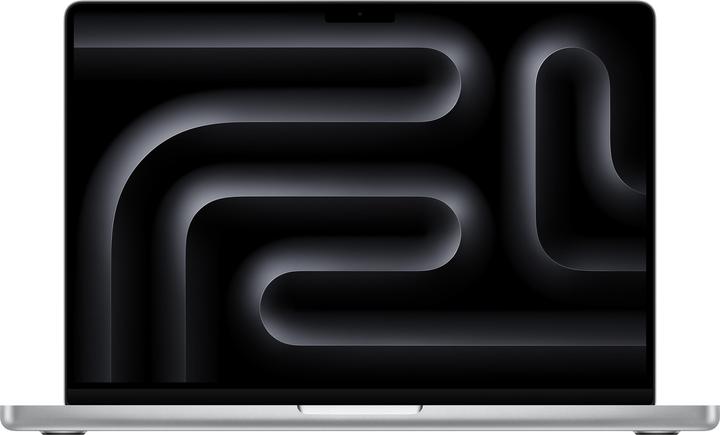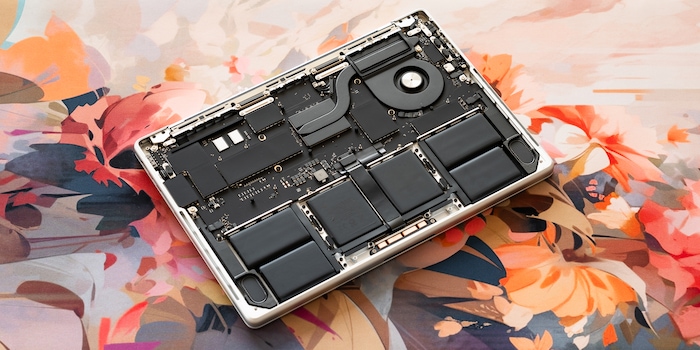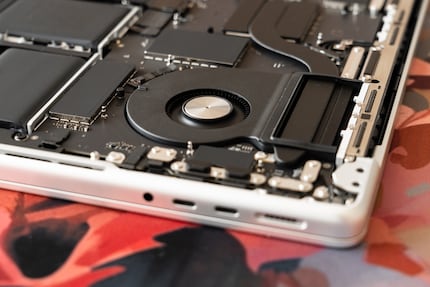

Putting the Apple M5 to the test
The new chip in the most affordable MacBook Pro is good. For a lot of applications, it’s so good that I’m increasingly questioning whether more expensive versions are even necessary.
Apple quietly unveiled the first M5-generation chip in mid-September. No keynote, no promo videos. The reason for this low-key approach is likely that the M5 will initially be used in three relatively niche products: the Vision Pro, the iPad Pro, and the basic version of the 14-inch MacBook Pro. I’m testing the chip in the latter.

The architecture’s almost completely unchanged compared to the M4, although the new version’s made using TSMC’s latest 3-nanometre process (N3P). This alone allows Apple to achieve yet another performance leap within a year, which would’ve been a sensational feat in the past. So, the chip certainly deserves a closer look.
CPU: fastest performance cores ever
In my benchmarks, the M5’s CPU achieves 19 per cent higher scores than the M4 when all cores are used – a huge improvement within a year. Since the number of cores remains the same, the increase comes from a higher clock speed. This is also clear in single-core benchmarks, where performance improves by an average of 15 per cent.
To put this into perspective compared to other manufacturers, these are the highest single-core scores ever. In Cinebench R24 (fourth slide in the graphic above), the M5 achieves a score of 199. Qualcomm’s Snapdragon X2 Elite Extreme only manages 160, Intel’s Core Ultra 9 285K scores 145 and AMD’s Ryzen 9 9950X3D sits on 139 points.
GPU: massive advances in ray tracing
There are even bigger improvements in graphics performance. In my benchmarks, the M5 outperforms its predecessor by an average of 42 per cent. The gap’s particularly significant in Cinebench R24 (third slide in the graphic below). This is likely because this benchmark supports ray tracing, and the engine responsible for it’s been upgraded in the M5. Neural Engine scores 19 per cent higher in Geekbench (last slide).
In Shadow of the Tomb Raider (fourth slide), the new chip delivers 47 per cent more frames per second (fps) than the M4. I also tested the newly released Mac version of Cyberpunk 2077 – unfortunately, I don’t have the M4’s benchmark results for comparison, and I only have the M4 Max MacBook Pro. This achieves 53 fps at 1600p resolution with high detail settings and no ray tracing. The M5 manages 20 fps.
That’s an excellent result considering the M4 Max has four times as many GPU cores as the base chip. To achieve playable FPS with the M5, I’d have to reduce the detail settings or enable upscaling. However, if the upcoming M5 Max makes similar progress, it could close the gap with Nvidia GPUs in games.
Practical applications: close to previous Pro chips
Programs such as DaVinci Resolve and Lightroom benefit from the additional performance to varying degrees depending on the task. My video test project exported 33 per cent faster (first slide in the graphic below). This puts the M5 almost level with the previous generation’s Pro chip (M3 Pro). However, 200 RAW images take almost as long to process in Lightroom as with the M4 (second slide). The 16 gigabytes of RAM are likely the bottleneck here, rather than the CPU or GPU.
The M5 performs significantly better than its predecessor in AI-powered tasks such as Lightroom’s noise reduction (third slide). The improvement’s even greater thanks to better ray tracing support in Blender (fourth slide). And browser benchmark Speedometer 3.0 (fifth slide) benefits from the record-breaking single-core performance.
Energy efficiency hasn’t improved. I don’t have a comparable device to test this myself, but the Notebookcheck portal measured four per cent fewer Cinebench points per watt compared to the M4. In other words, Apple achieves increased performance at the expense of slightly disproportionately higher energy consumption. It’s acceptable for the price point. There’s only a risk of increased heat output leading to more thermal throttling in passively cooled devices such as the MacBook Air.
Fewer and fewer tasks require expensive chips
The M5 doesn’t open up any new possibilities – after all, Apple already offers more powerful chips including the M4 Pro and M4 Max. However, it’d be unfair to dismiss the new SoC as unimportant. It consistently advances development that began with the M1, with the performance of Apple’s chips increasing faster than applications demand.

In other words,MacBooks are getting cheaper. You need increasingly lower-end chip versions for the same demands. Previously, I recommended at least the Pro chip for things such as image editing. Now, the basic version’s good enough in most cases. And if you’re using programs where «more is more», each new model offers even better performance for the same price.
I’m curious to see the M5 Pro and M5 Max. If Apple sticks to tradition, the more expensive chips will use the same cores as the M5 – just more of them. However, a large proportion of computing power’s outsourced to cloud servers and Mac’s portfolio of AAA games is still small, so how many people actually need more than the M5?
My fingerprint often changes so drastically that my MacBook doesn't recognise it anymore. The reason? If I'm not clinging to a monitor or camera, I'm probably clinging to a rockface by the tips of my fingers.
Interesting facts about products, behind-the-scenes looks at manufacturers and deep-dives on interesting people.
Show all

